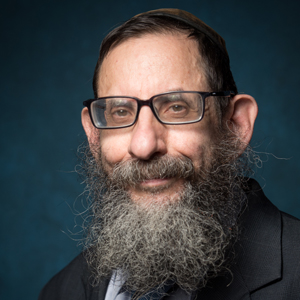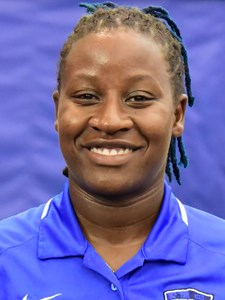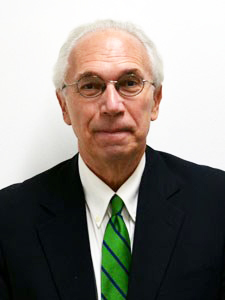Message From Our President

Dear Students, Faculty, Staff and Friends,
I am pleased to present to you this Guide to our plans for the upcoming fall semester and reopening of our campuses. In form and in content, this coming semester will be like no other. We will live differently, work differently and learn differently. But in its very difference rests its enormous power.
The mission of Yeshiva University is to enrich the moral, intellectual and spiritual development of each of our students, empowering them with the knowledge and abilities to become people of impact and leaders of tomorrow. Next year’s studies will be especially instrumental in shaping the course of our students’ lives. Character is formed and developed in times of deep adversity. This is the kind of teachable moment that Yeshiva University was made for. As such, we have developed an educational plan for next year that features a high-quality student experience and prioritizes personal growth during this Coronavirus era. Our students will be able to work through the difficulties, issues and opportunities posed by our COVID-19 era with our stellar rabbis and faculty, as well as their close friends and peers at Yeshiva.
To develop our plans for the fall, we have convened a Scenario Planning Task Force made up of representatives across the major areas of our campus. Their planning has been guided by the latest medical information, government directives, direct input from our rabbis, faculty and students, and best practices from industry and university leaders across the country. I am deeply thankful to our task force members and all who supported them for their tireless work in addressing the myriad details involved in bringing students back to campus and restarting our educational enterprise.
In concert with the recommendations from our task force, I am announcing today that our fall semester will reflect a hybrid model. It will allow many students to return in a careful way by incorporating online and virtual learning with on-campus classroom instruction. It also enables students who prefer to not be on campus to have a rich student experience by continuing their studies online and benefitting from a full range of online student services and extracurricular programs.
In bringing our students back to campus, safety is our first priority. Many aspects of campus life will change for this coming semester. Gatherings will be limited, larger courses will move completely online. Throughout campus everyone will need to adhere to our medical guidelines, including social distancing, wearing facemasks, and our testing and contact tracing policies. Due to our focus on minimizing risk, our undergraduate students will begin the first few weeks of the fall semester online and move onto the campus after the Jewish holidays. This schedule will limit the amount of back and forth travel for our students by concentrating the on-campus component of the fall semester to one consecutive segment.
Throughout our planning, we have used the analogy of a dimmer switch. Reopening our campuses will not be a simple binary, like an on/off light switch, but more like a dimmer in which we have the flexibility to scale backwards and forwards to properly respond as the health situation evolves. It is very possible that some plans could change, depending upon the progression of the virus and/or applicable state and local government guidance.
Before our semester begins, we will provide more updates reflecting our most current guidance. Please check our website, yu.edu/fall2020 for regular updates. We understand that even after reading through this guide, you might have many additional questions, so we will be posting an extensive FAQ section online as well. Additionally, we will also be holding community calls for faculty, students, staff and parents over the next couple of months.
Planning for the future during this moment has certainly been humbling. This Coronavirus has reminded us time and time again of the lessons from our Jewish tradition that we are not in full control of our circumstances. But our tradition also teaches us that we are in control of our response to our circumstances. Next semester will present significant challenges and changes. There will be some compromises and minor inconveniences--not every issue has a perfect solution. But faith and fortitude, mutual cooperation and resilience are essential life lessons that are accentuated during this period. And if we all commit to respond with graciousness, kindness, and love, we can transform new campus realities into profound life lessons for our future.
Deeply rooted in our Jewish values and forward focused in preparing for the careers and competencies of the future, we journey together with you, our Yeshiva University community, through these uncharted waters. Next year will be a formative year in the lives of our students, and together we will rise to the moment so that our students will emerge stronger and better prepared to be leaders of the world of tomorrow.
Best Wishes,
Ari Berman

 Joe Bednarsh, Director of Athletics
Joe Bednarsh, Director of Athletics Rabbi Shalom Carmy
Rabbi Shalom Carmy Danielle Carr
Danielle Carr The bone-chilling image of more than 100,000 Nazis saluting the Reich and Adolf Hitler himself at the 1936 Olympic Games in Berlin, Germany, resonates to this day on par with banging a steel drum in a phone booth.
While Jesse Owens, whose skin color and DNA the Nazis told us would put him in a hopeless position on the track, gave the ultimate response by bringing home four gold medals, there was another group of men, mostly Jewish and a few gentile, who displayed a different form of courage and selflessness by voting to not attend the Games.
Back then, before anyone knew of the Blue Devils, the Bruins, the Wildcats and the Jayhawks, there were the Long Island University Blackbirds, which had arguably the most dominant basketball team in the country despite being a tiny school in downtown Brooklyn. Coached by the legendary Clair Bee, LIU went undefeated in the 1935-36 season (25-0). This was a few years before the National Invitation Tournament and National Collegiate Athletic Association came into existence, and the Blackbirds were hailed by many as the national champions. They would have likely brought home the United States’ first men’s basketball gold medal.
During this period, the nation’s top teams were invited to Olympic trials, and the likelihood was that all of the LIU members would have made the team. A few teams decided to not attend, citing exhaustion and academic concerns, but LIU’s president, Tristam Walker Metcalfe, spoke with verve about not directly or indirectly supporting a country that was persecuting Jews. The LIU team decided to hold a secret ballot. If it wasn’t a unanimous yes, that meant to them that the entire group would not attend the trials.
To this day, we don’t know how each player voted, or if the strong personality of the warm-hearted Bee had a hand in the decision, but we do know that enough voted “No” to not attend. All the members of this team—Jules Bender, Ben Kramer, Harry Grant, Art Hillhouse, Ken Norton, Bill Schwartz, Leo Merson and Marius Russo, who would go on to an outstanding baseball career as a pitcher for the New York Yankees—are long gone, and the children and grandchildren of these giants have limited information on the subject.
Merson, who died in 2001, was Jewish and felt family pressure to not attend the trials. He never uttered a word about this secret ballot until he told his daughter, Melissa, 60 years later while they were visiting the National Holocaust Museum in Washington, D.C., and standing before an exhibit about the 1936 Olympics and Owens’ exploits. His daughter would go on to provide this information to the administration at LIU, which I was a part of. As word soon spread, she was invited to carry the Olympic torch in his honor, and a few years later this human-first group was inducted posthumously into the National Jewish Sports Hall of Fame.
The bone-chilling image of more than 100,000 Nazis saluting the Reich and Adolf Hitler himself at the 1936 Olympic Games in Berlin, Germany, resonates to this day on par with banging a steel drum in a phone booth.
While Jesse Owens, whose skin color and DNA the Nazis told us would put him in a hopeless position on the track, gave the ultimate response by bringing home four gold medals, there was another group of men, mostly Jewish and a few gentile, who displayed a different form of courage and selflessness by voting to not attend the Games.
Back then, before anyone knew of the Blue Devils, the Bruins, the Wildcats and the Jayhawks, there were the Long Island University Blackbirds, which had arguably the most dominant basketball team in the country despite being a tiny school in downtown Brooklyn. Coached by the legendary Clair Bee, LIU went undefeated in the 1935-36 season (25-0). This was a few years before the National Invitation Tournament and National Collegiate Athletic Association came into existence, and the Blackbirds were hailed by many as the national champions. They would have likely brought home the United States’ first men’s basketball gold medal.
During this period, the nation’s top teams were invited to Olympic trials, and the likelihood was that all of the LIU members would have made the team. A few teams decided to not attend, citing exhaustion and academic concerns, but LIU’s president, Tristam Walker Metcalfe, spoke with verve about not directly or indirectly supporting a country that was persecuting Jews. The LIU team decided to hold a secret ballot. If it wasn’t a unanimous yes, that meant to them that the entire group would not attend the trials.
To this day, we don’t know how each player voted, or if the strong personality of the warm-hearted Bee had a hand in the decision, but we do know that enough voted “No” to not attend. All the members of this team—Jules Bender, Ben Kramer, Harry Grant, Art Hillhouse, Ken Norton, Bill Schwartz, Leo Merson and Marius Russo, who would go on to an outstanding baseball career as a pitcher for the New York Yankees—are long gone, and the children and grandchildren of these giants have limited information on the subject.
Merson, who died in 2001, was Jewish and felt family pressure to not attend the trials. He never uttered a word about this secret ballot until he told his daughter, Melissa, 60 years later while they were visiting the National Holocaust Museum in Washington, D.C., and standing before an exhibit about the 1936 Olympics and Owens’ exploits. His daughter would go on to provide this information to the administration at LIU, which I was a part of. As word soon spread, she was invited to carry the Olympic torch in his honor, and a few years later this human-first group was inducted posthumously into the National Jewish Sports Hall of Fame.
 When you talk about Jews in sports, one of their most highly visible roles was in broadcasting. Not many people realize this, but Mel Allen, the “Voice of the Yankees,” was born to Jewish immigrants as Melvin Israel in the early 20th century. Allen was the Yankees announcer for the ‘40s, ’50s and ’60s as the team dominated the baseball landscape.
Marty Glickman first entered the American sports scene as an Olympic-level track and field star at Syracuse University in the 1930s. He later became the play-by-play announcer for the New York Knicks and coined such iconic phrases as “Good! Like Nedicks” (referring to the famous cafeteria right outside Madison Square Garden). Glickman also did boxing matches and harness racing before moving into high-profile play-by-play roles for the New York Football Giants and the New York Jets. He is widely considered the most influential sportscaster of his time.
The next generation of great Jewish sportscasters began with Marv Albert (Marvin Aufrichtig), the patriarch of perhaps the “First Family” of Jewish sportscasters. At one time, he and his younger brothers Al (Warriors) and Steve (Nuggets) were calling games for three different NBA franchises. Marv called New York Knicks games from 1967 to 2004, adding “Yes!” and “Air Ball” to every basketball fan’s vocabulary and, while doing New York Rangers broadcasts, made “kick save and a beauty” a signature call.
Marv’s son, Kenny, began his career as an undergraduate student as play-by-play voice for his college hoop team, the New York University Violets. His career skyrocketed from there to where he is now a featured voice for Fox Sports (NFL, MLB), NBC (NHL) and the MSG Network (Knicks). Rarely does a sports weekend go by without Kenny appearing on a national telecast.
The tradition continues here in New York as Bruce Beck recently won his ninth “New York State Sportscaster of the Year” award. The Ithaca College graduate, who began his career with the MSG Network before joining NBC, has covered seven Olympics for NBC 4 New York.
On a different national stage, Chris Berman of ESPN is perhaps that network’s most famous Jewish studio host. His trademark “back, back, back” baseball call is legendary, and his imitations of Howard Cosell’s Monday Night Football play-by-play calls always stir great memories.
Among the many other Jewish sportscasters currently on the scene are Sam Rosen (MSG, Fox), Steve Levy (ESPN), Mike Greenberg (ESPN), Adam Schefter (ESPN), Dave Cohen (Georgia State University) and Jon Bloom (Phoenix Suns).
When you talk about Jews in sports, one of their most highly visible roles was in broadcasting. Not many people realize this, but Mel Allen, the “Voice of the Yankees,” was born to Jewish immigrants as Melvin Israel in the early 20th century. Allen was the Yankees announcer for the ‘40s, ’50s and ’60s as the team dominated the baseball landscape.
Marty Glickman first entered the American sports scene as an Olympic-level track and field star at Syracuse University in the 1930s. He later became the play-by-play announcer for the New York Knicks and coined such iconic phrases as “Good! Like Nedicks” (referring to the famous cafeteria right outside Madison Square Garden). Glickman also did boxing matches and harness racing before moving into high-profile play-by-play roles for the New York Football Giants and the New York Jets. He is widely considered the most influential sportscaster of his time.
The next generation of great Jewish sportscasters began with Marv Albert (Marvin Aufrichtig), the patriarch of perhaps the “First Family” of Jewish sportscasters. At one time, he and his younger brothers Al (Warriors) and Steve (Nuggets) were calling games for three different NBA franchises. Marv called New York Knicks games from 1967 to 2004, adding “Yes!” and “Air Ball” to every basketball fan’s vocabulary and, while doing New York Rangers broadcasts, made “kick save and a beauty” a signature call.
Marv’s son, Kenny, began his career as an undergraduate student as play-by-play voice for his college hoop team, the New York University Violets. His career skyrocketed from there to where he is now a featured voice for Fox Sports (NFL, MLB), NBC (NHL) and the MSG Network (Knicks). Rarely does a sports weekend go by without Kenny appearing on a national telecast.
The tradition continues here in New York as Bruce Beck recently won his ninth “New York State Sportscaster of the Year” award. The Ithaca College graduate, who began his career with the MSG Network before joining NBC, has covered seven Olympics for NBC 4 New York.
On a different national stage, Chris Berman of ESPN is perhaps that network’s most famous Jewish studio host. His trademark “back, back, back” baseball call is legendary, and his imitations of Howard Cosell’s Monday Night Football play-by-play calls always stir great memories.
Among the many other Jewish sportscasters currently on the scene are Sam Rosen (MSG, Fox), Steve Levy (ESPN), Mike Greenberg (ESPN), Adam Schefter (ESPN), Dave Cohen (Georgia State University) and Jon Bloom (Phoenix Suns).